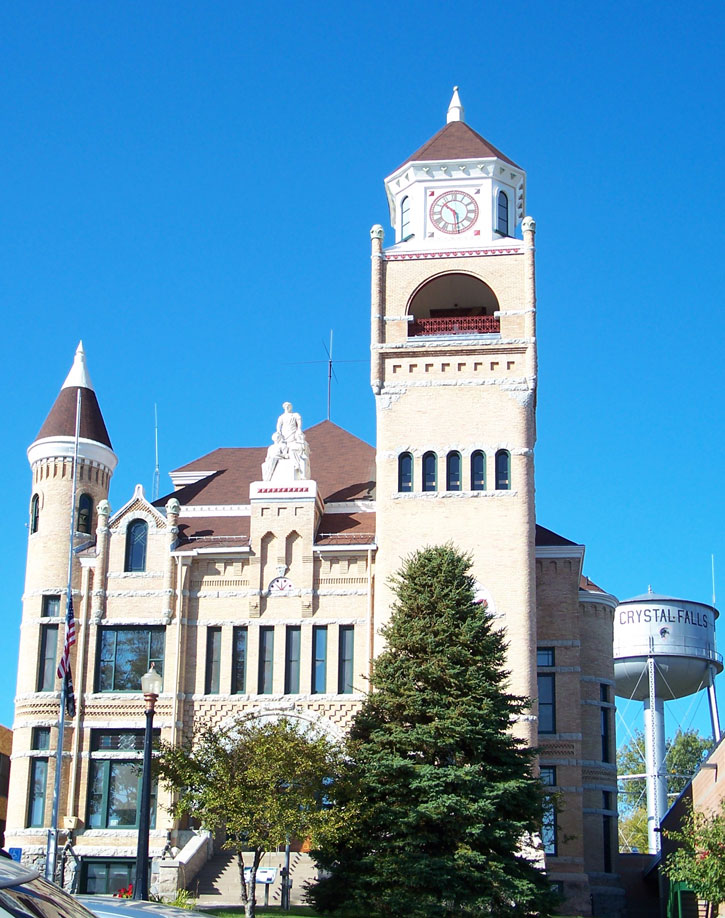
The Iron County Courthouse in Crystal Falls, Michigan. Photo © Brian Rawsom-Ketchum, licensed Creative Commons Attribution Share-Alike.
Other displays not to miss: the Mining Memorial, with a database of area mines and miners along with a video of life in the mines; a 3-D acrylic mine diagram that will enable visitors to appreciate the depths of the mine, precisely where the ore has been extracted, and where it remains. You’ll also see a 50-foot-long diorama of a logging camp, complete with hundreds of folk-art figures by local artist William Monogal; newspaper clippings on Iron River’s 1920 “rum rebellion,” when federal agents from Chicago stormed the home of the priest and discovered eight barrels of rum, only to be condemned by the county prosecutor. Topping it off is an exhibit depicting the history of the local labor movement, which helped boost miners’ earnings from $365 per year in 1931 to $1,886 per year a decade later.
Outside, several relocated buildings occupy the grounds, including a streetcar barn, and the actual streetcar that once traveled between the mines in Caspian and Iron River.
Head to Crystal Falls for a look at the small-town life of miners at the turn of the century. Tour the Harbour House Museum (906/875-4341 guided tours 10am-2pm Thurs.-Sat. or by appointment June-Aug., $2 adults, $5 families), a restored Queen Anne colonial revival home that houses a two-story museum, complete with authentic furnishings and decorations and several exhibits displaying regional artifacts.
Visit Mile Post Zero and Treaty Tree as well; as you might expect, this spot is simply a mile marker and a treaty tree, but its historical significance is certainly noteworthy. The site marks the precise location of the survey point that set the boundary between Michigan and Wisconsin in 1840. To get there, follow Highway 73 west out of Iron River until you come to Ottawa Lake Road. Continue to West Brule Lake Road, and proceed west until you arrive at the Stateline Picnic Grounds. Follow the trail signs until you come to the marker, which is about a 0.5-mile hike.
Other sites on the Iron County Heritage Trail include a museum, the county courthouse, and a pioneer church. Contact Friends of the Heritage Trail (906/875-6642) for maps and additional information.
Excerpted from the Third Edition of Moon Michigan’s Upper Peninsula.